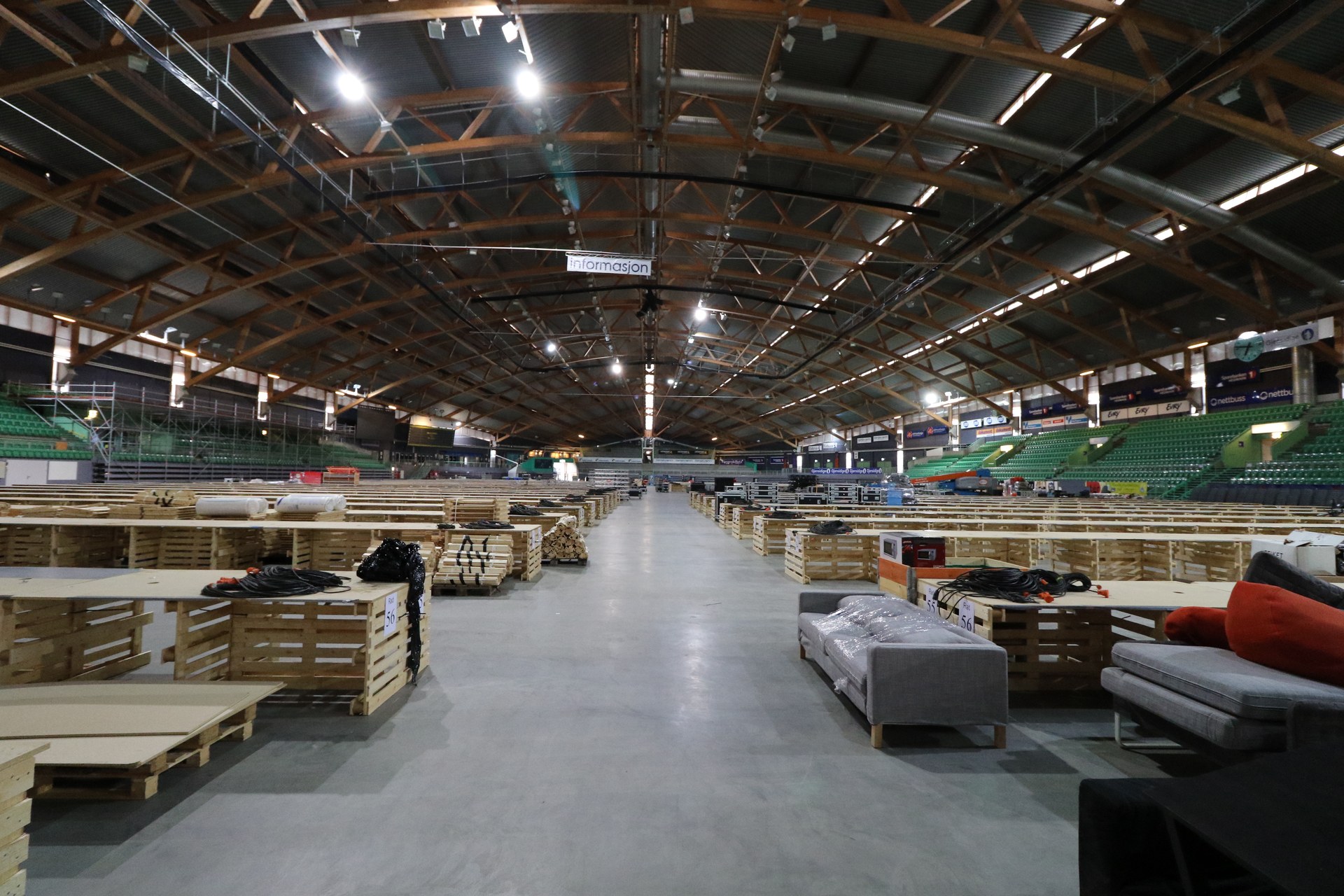Denne helga samles Tech-crewet for The Gathering 2019 for å begynne siste del av planlegginga for påsken. Dette er en årlig greie, med litt varierende tema og agenda. I år har vi prøvd å få med flere fra Tech:Support, da det er en gjeng drastisk undervurderte folk.
En av tinga vi satser på denne helga er noe jeg ikke har vært med på før: Vi skal snakke oss igjennom hele opprigget, steg for steg. Jeg mistenker det vil gi oss plenty av muligheter til digresjoner, for å si det sånn!
Hvorfor gjøre dette?
Fordi jeg tror ikke det er en eneste person i crewet som faktisk har god oversikt over opprigget vårt i sin helhet, og vi håper å kunne spare mange timer på små endringer.
Det går rett og slett på ting som “Hvorfor bruker vi hele fredagen bare på å få satt opp vår egen arbeidsplass i NOC’en?” og “er det fordi vi gjør ting tregt at det tar så lang tid å sette opp distro-svitsjene, eller er det en annen grunn?”
Jeg skal ikke gå for mye inn i detaljer (Fordi Marius er rett rundt hjørnet for å låne sofaen min), men jeg tror dette blir … spennende.
Andre ting vi ser på denne helga er diverse småting og små demoer. Ansible til å kjøre kommandoer på svitsjer, netbox for ipam, og ganske mye annet.
Om vi rekker kommer vi også til å kjøre igjennom en del standard Juniper-ting, av det nærmest banale. Fordi vet du hva? Det er faktisk bare en eller to i Tech som jobber med Juniper jevnlig nå. Vi er ikke eksperter faktisk. De fleste av oss er med på dette fordi vi lærer sykt mye hvert enese år.
Jeg lover å komme med en oppdatering, men i mellomtiden kan dere også joine oss på discord (vi er blitt unge og hippe nå! Discord i stedet for IRC!!!!) – INVITE LINK TING
Da jeg i sin tid begynte å arrangere LAN for alvor var det 30-50 folk vi starta med. Hvis vi hopper over en gjesteopptreden på TG02 så var første gang BølerLAN i 2003. Jeg hadde akkurat flytta ut av Oslo, og det var aldri arrangert LAN på Bøler før. Selv om vi endte opp uten internett (ingen viste brukernavn/passord og slikt til ISDN-linken som fritidsklubben hadde) så er det et av de beste arrangementene jeg kan huske.
Å arrangere mindre parties var utrolig gøy, men å faktisk få tak i utstyr var ikke lett. Å finne ut hvordan man får fiksa internett på en pålitelig måte tok noen år – ikke fordi vi ikke klarte å sette det opp, men fordi vi måtte lære oss hvordan vi skulle snakke med ISP’er og sånt på et språk som nådde fram.
På TG er det helt motsatt. Vi har, sammenlignet med BølerLAN, en helt enorm skala. Vi har et par hundre svitsjer stående på et lager (!!! ikke i boden min, men et faktisk LAGER!), vi har eget crew som kan hjelpe med avtaler med sponsorer. Og vi HAR sponsorer! Vi har faktisk fiberkabler (!), vi kjører ikke DHCP-serveren fra privat-pc’en min. Vi har et eget crew som har ansvar for å frakte ting dit det skal når det skal være der. Vi har en helt annen hverdag enn stort sett alle andre dataparties/LAN i Norge.
Men hei, her er greia. Vi har også “jira” (prosjektstyringsverktøy), planlegging for TG19 som tar nærmere ett år. Egne tasks som går kun ut på å finne ut hvilke tasks vi faktisk har innen et gitt område. Vi får (muligens rettmessig) kjeft av folk som bruker begreper som “HMS” når vi gjør litt trygghetsmessig tvilsomme ting på toppen av høye ting (ahem, dette skal vi altså ikke gjøre). Vi må forholde oss til tollsedler. Mengden ting vi må TELLE før og etter hvert arrangement er i seg selv verdt å telle opp. Vi må koordinere når vi ruller ut svitsjer under opprigg så det ikke kolliderer med planene til de som rigger scena, de som rigger strøm eller de som skal henge opp et eller annet i taket. Det er i det hele tatt en helt annen greie å arrangere TG.
Men i helga skal i hvert fall jeg litt tilbake til røttene. I helga går spillexpo av stabelen på Lillestrøm, og underveis arrangeres “The Gathering: Origins” (https://origins.gathering.org/). Dette er det jeg vil kalle et “vanlig” LAN. Om du ikke har noe å bestille i helga så ta turen innom (Ser du dette Dawn? Får jeg pluss i margen nå for å reklamere litt?)! Størrelsen er vel kanskje 70 folk?
På teknisk har jeg med meg et par andre tg-folk. Vi skulle gjerne hatt ikke-tg-folk, men for meg var dette noe jeg bare gjør fordi noen spurte meg. Etter 16 år med dataparties med alt fra 30-40 deltakere til 5500+ så er det å gå “tilbake” til noe slikt ganske gøy.
At vi kan låne TG sitt utstyr fra KANDU hjelper selvsagt. Men så viste det seg at vi har jo også et ganske solid kontaktnett. Så når vi fant ut at vi kanskje trengte en firewall fordi vi (fortsatt) er litt usikre på om vi må kjøre NAT eller ikke, så spurte jeg litt rundt. Da viser det seg selvsagt at Harald (I Tech:Net og fra Fortinet), fantastisk som han er, har en gigantisk Fortigate-brannmur liggende hjemme – den vi etter planen skal bruke på TG19. “Og forresten, Kristian, så har jeg no fortinetsvitsjer også som fortigaten kan styre så slipper du konfe svitsjer?”. Ja ok, så vi har et lager fullt av svitsjer til TG, men det viser seg at HARALD har basically hele nettet vi trenger liggende klar til bruk hjemme så vi trenger ikke en gang låne fra TG/KANDU? Hva skjedde med tiden der jeg knappast klarte å oppdrive TP-kabler nok til et LAN!?
Men så prater jeg litt piss med Lasse da, og vi kommer – som vi ofte gjør – inn på dette med LAN. Og vi mimrer om gamledager og sånt. Jeg tenker at det er ganske gøy med slike små parties. Og han nevner noe for meg som jeg kanskje visste, men ikke har tenkt på: Det er parties som sliter med å skaffe tech crew der ute.
Folkens, dette må vi jo fikse!
Det er folk i detta landet som elsker å arrangere LAN og kan løse det aller meste. Det er folk som sitter med utstyr de VIL låne bort til LAN, fordi da kan de teste det litt. Og du har folk som ikke får tak i tech-crew til LAN?
Dette er jo for dumt.
Så, jeg vet ikke hvordan vi løser dette, men jeg kan jo bidra litt. Vi prøvde oss på tech-meetup SLACK, men det døde ut rimelig fort. Jeg orker ikke komme med et forslag på bedre kommunikasjonsplattform nå (Da er vi litt over i oppgaver som sorterer i “Jira”-paragrafen over i stedet for den morsomme paragrafen), så jeg foreslår heller:
Sliter du med å få tak i tech-crew til et LAN et eller annet sted? Sliter du med utstyr? Internett? whatever teknisk? Ta kontakt med oss/meg så ser vi om vi finner ut noe. Enten bare skriv en kommentar her, eller mail meg på kly@kly.no (eller ping meg på EFNet, jeg er kly, men svartid varierer veldig). Ikke noe høytidelig eller noe. Om e-post-boksen min eksploderer så går det bra.
Om noen andre har gidd nok til å sette opp noe for å løse og ønsker å spre det glade budskap så tar jeg gjerne å skriver om det her altså. Og/eller kommer med innspill. Personlig er jeg ingen facebook-bruker, så akkurat der melder jeg meg ut personlig (men jeg er en gammal gubbe i LAN-målestokk, så ikke la meg diktere løsning).
Om du er interessert i å hjelpe udefinerte LAN parties hvis det passer så kan du jo slenge deg på under i kommentarfeltet også?
Point being: Det er hjelp å få, om man spør! Vi suger bare på selv-organisering på tvers av LAN!
I fjor samlet vi hele 40 personer fra LAN miljøet rundt om i Norge. Initiativet fikk gode tilbakemeldinger og det virket som et fornuftig initiativ.
Vi ønsker i år som i fjor å samle teknikere fra hele Norges LAN/Dataparty-miljø. Dette er lavterskel, det eneste vi ønsker er at de som deltar har vært med teknisk på et arrangement før. Det kan være et med 10 deltakere eller 10 000. Spiller ingen rolle.
Agendaen blir ganske løs som i fjor. Har du noe du på hjertet og ønsker prate om så er det ingenting i veien for det.
Sannsynligvis kommer dette til å skje på Fredag og vi kommer til å stille med et rom og trolig noe å tygge på.
Høres dette interessant ut? Påmelding finner du her: https://goo.gl/sLCRpY
Om du bare kommer for meetupen kan det hende vi kan ordne noen dagsbiletter, men vi kan ikke garantere noe enda da vi må se ann pågangen litt. Ta kontakt, så finner vi ut av det!
Har du noen ytterligere spørsmål eller kommentarer så ta gjerne kontakt med oss via meetup@gathering.org
The Gathering has almost come to an end and it’s about time we posted some details about our network design.

Network design
Our network is designed in the traditional three-layered hierarchical model with the core, distribution and access layer where L3 is terminated at our distribution.
Core layer
The core L3 switches consists of 2x Juniper QFX5100 in a virtual chassis, which is Junipers stacking technology. In addition to provide our distribution with uplinks, the core switch also connects our 80Gig backbone ring with our stand and border router.
Between our border router the internet we have an inline Juniper SRX5800 which is capable of pushing 2Tbps worth of firewall throughput(!). This is where we terminate our BGP peering with Telenor and do route redistribution to OSPF, making the SRX our OSPF ASBR.
Distribution Layer
The L3 distribution switches consists of 3x Juniper EX3300 in a virtual chassis per distribution. It connects to the core using 2x 10Gbps singel-mode transceivers patched into our MPO cassettes pulled from the ceiling. The distro redistributes its connected routes into the OSPF area and advertises it to the core.
Access layer
The L2 access switches consists of 144+ Juniper EX2200 with a 3x 1Gbps connection to our distribution. To protect our network at the edge, we run a series of security features collectively called first-hop security. This takes care of a lot of potential issues such as loops, spoofing and ARP-poisoning.
vc1.ring
One of the design choices this year was to turn our backbone ring, which traverses the entire arena, into a virtual chassis instead of separate routers. This effectively means that it becomes a distribution switch for our crew network. This makes it easy for us to provision edge/access switches to our sponsors and crew areas. As a result we have for the first time ever provisioned our entire access network. Not a single access switch has been configured manually this year!
Internet capacity
TL;DR – 40Gbps…
At TG16 we suffered several DDoS attacks towards our network and even our website (gathering.org). In order to be able to handle a potential DDoS attack this year we decided to upgrade our internet capacity from 40Gbps to 40Gbps + 10Gbps, where the newly added 10Gbps-link would be reserved for our production environment. Instead of dedicating a single physical interface, we decided to include the interface in our aggregated interface and rate-limit our participants network to 40Gbps. This way we keep our production network alive when our participants network gets lit up.
The party is well underway, and I was dumb enough to say aloud the phrase “We should probably blog something?”. Everyone agreed, and thus told me to do it. Damn it.
Anyway, things are going disturbingly well. We were done with our setup 24 hours ahead of time, more or less. I’ve had the special honor of being the first to get a valid DHCP lease in the NOC and the first to get a proper DHCP lease “on the floor”. And I’ve zeroized the entire west side of the ship (e.g.: reset the switches to get them to request proper configuration, this involved physically walking to each switch with a console cable and laptop).
But we have had some minor issues.
First, which you might have picked up, we have to tickle the edge switches a bit to get them to request configuration. This cost us a couple of hours of delay during the setup. And it means that whenever we get a power failure, our edge switches boot up in a useless state and we have to poke them with a console cable. We’ve been trying to improve this situation, but it’s not really a disaster.
We’ve also had some CPU issues on our distribution switches. Mainly whenever we power on all the edge switches. To reduce the load, we disabled LACP – the protocol used to control how the three uplinks to each edge switch is combined into a single link. This worked great, until we ran into the next problem.
The next problem was a crash on one of the EX3300 switches that make up a distribution switch (each distribution switch has 3 EX3300 switches in a virtual chassis). We’re working with Juniper on the root cause of these crashes (we’ve had at least 4 so far as I am aware). A single member in a VC crashing shouldn’t be a big deal. At worst, we could get about a minute or two of down-time on that single distribution switch before the two remaining members take over the functionality.
However, since we hade disabled LACP earlier, that caused some trobule: The link between the core router and the distribution switch didn’t come back up again because that’s a job for LACP. This happened to distro7 on wednesday. We were able to bring distro7 up again quite fast regardless, even with a member missing.
After that, we re-enabled LACP on all distribution switches, which was the cause of the (very short) network outage on wednesday across the entire site.
Other than that, there is little to report. On my side, being in charge of monitoring and tooling (e.g.: Gondul), the biggest challenge is the ring now being a single virtual chassis making it trickier to measure the individual members. And the fact that graphite-api has completely broken down.
Oh, and we’ve had to move our SRX firewall, because it was getting far too hot… more on that later?
This time, there were no funny pictures though!
This year our wireless seems to be alot more stable then ever before.
Unfortunately i’m not much of a wireless-guy myself, so i can’t go into all the details, but i just felt like writing a small post about our wireless anyway.
This year we have Fortinet onboard to provide us with equipment for the wireless network.
The equipment we use consists of a total of 162 FortiAP U421EV (deployed) and 2 FortiWLC-3000D.
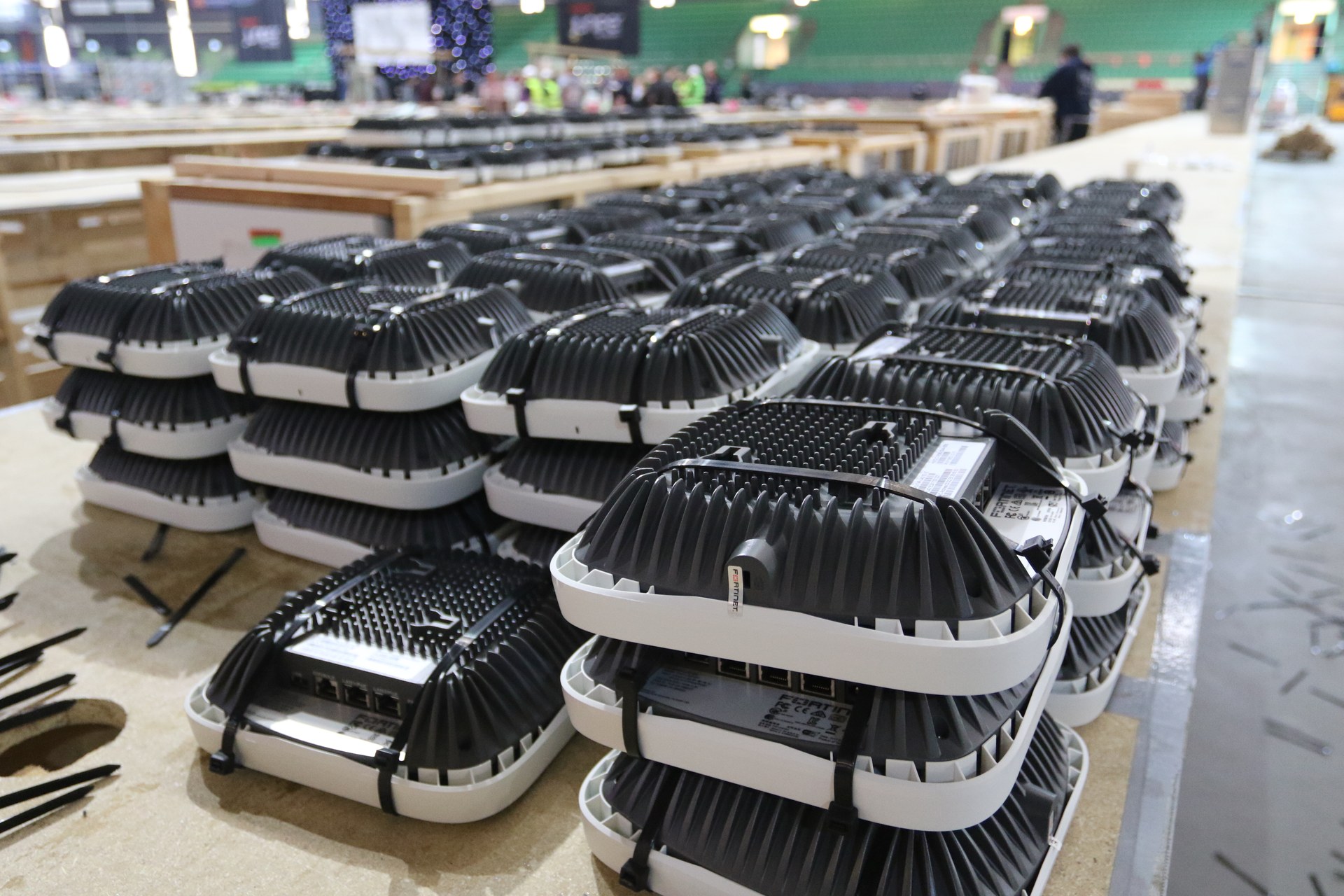
As of right now we have 1517 clients, where 1487 of them are on 5GHz and 30 on 2.4GHz.
The 2.4GHz SSID is hidden and mostly used for equipment that don’t support 5GHz, like PS4 for example.
We have performed some testing by roaming around the vikingship and got an average of 20ms latency and 35-ish Mbps. Our Wireless guy almost managed to watch an entire episode on Netflix without major disruption while walking around!
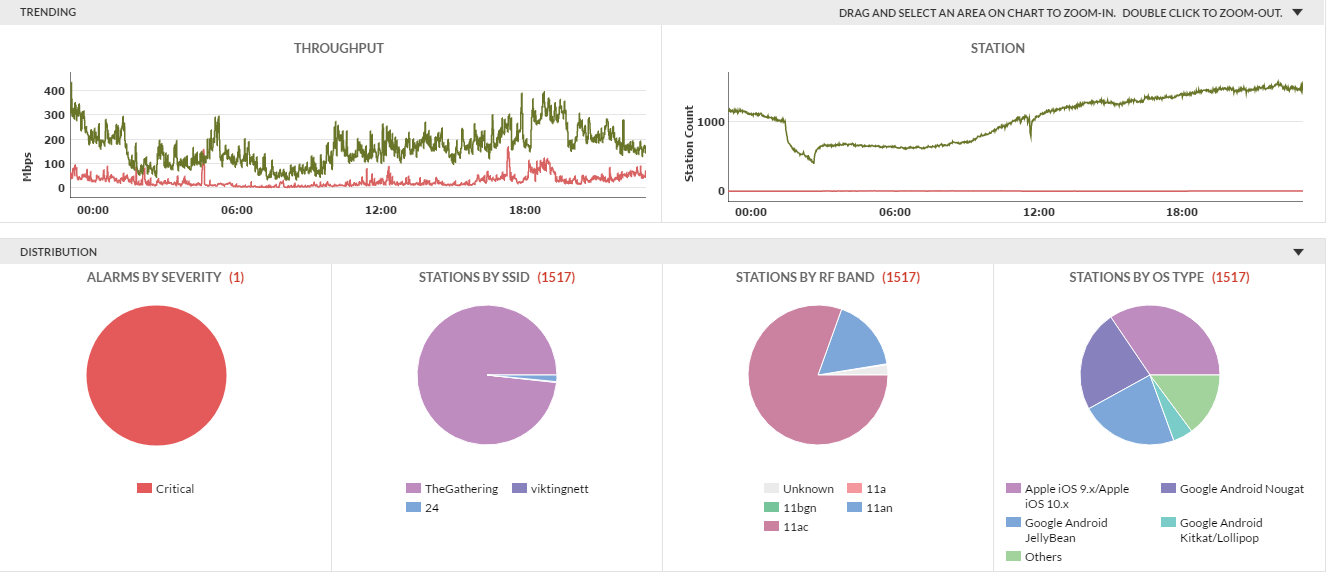
The accesspoints are spread evenly across the Vikingship.
We have one accesspoint at the end of every second row on each side of the vikingship, as well as one accesspoint per row on each side.
Well.. it’s kinda hard to explain in words, so have a low-quality picture from my phone of our drawing board in the NOC:
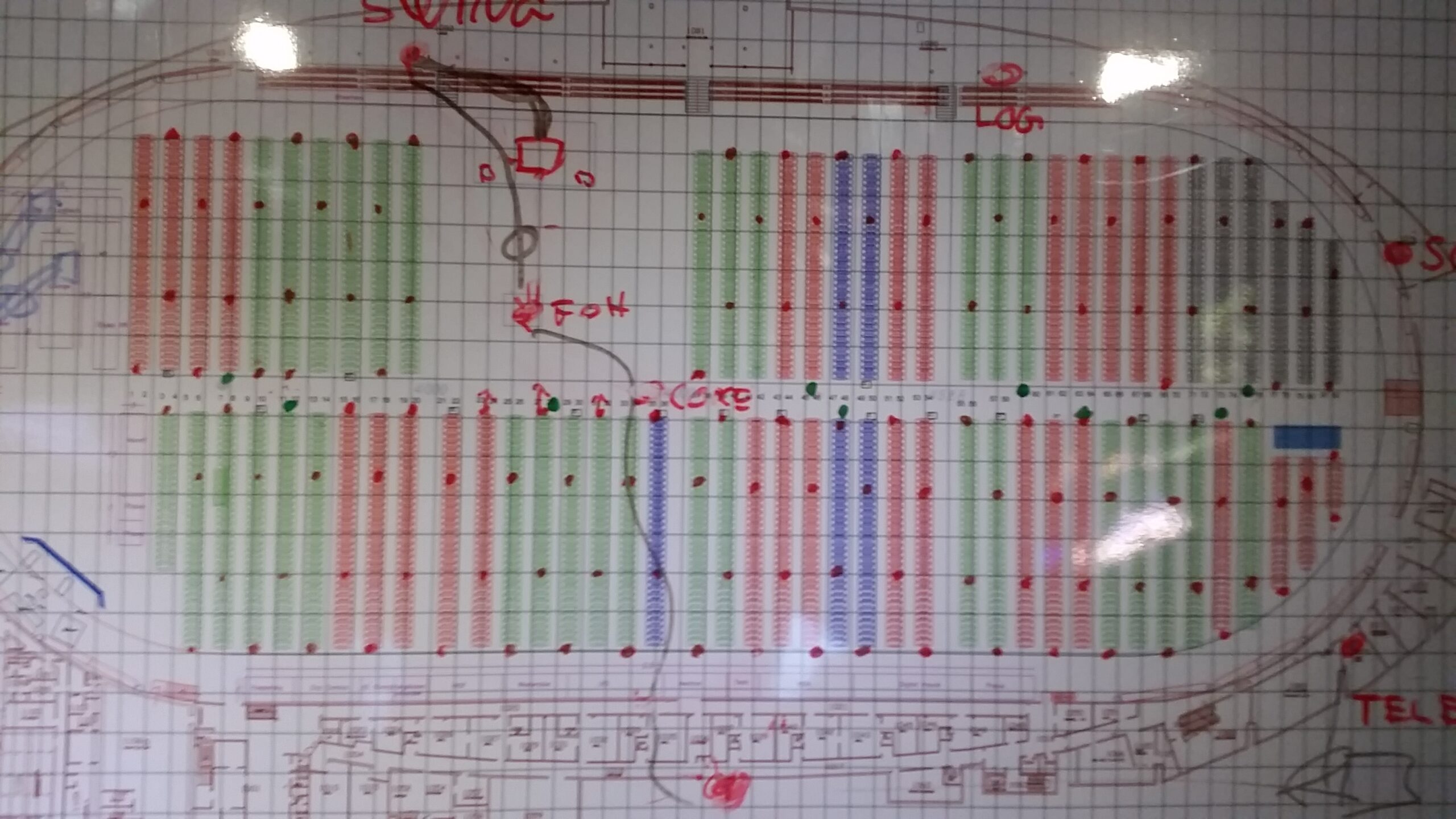
The red dots across the tables represents the AP placements in the main area of the vikingship.
Below you can see a map with the AP placement from our wireless controller.
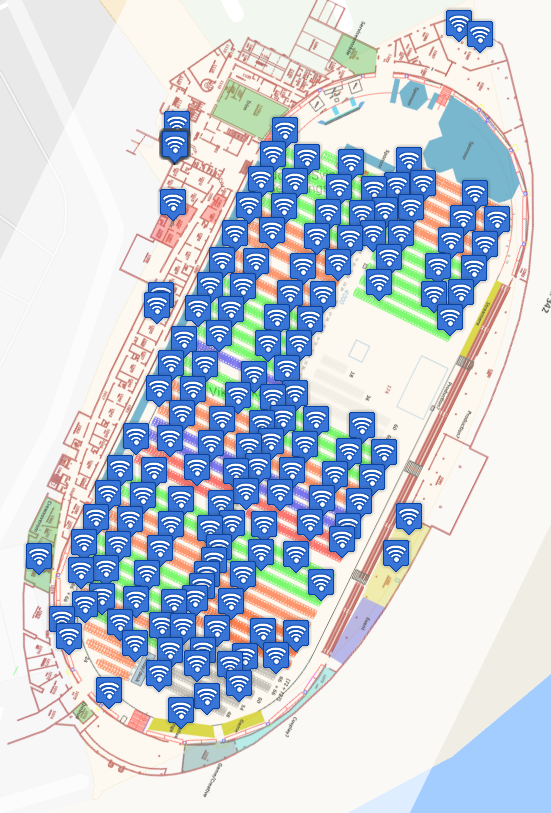
Well.. as i said i’m not much of a wireless guy, but i hope you got some interesting information about how our wireless is deployed this year.
If you have any questions regarding Wireless at TG17, feel free to contact us on the official discord server for The Gathering, channel #tech 🙂
And meanwhile, we are on the lookout for trouble.
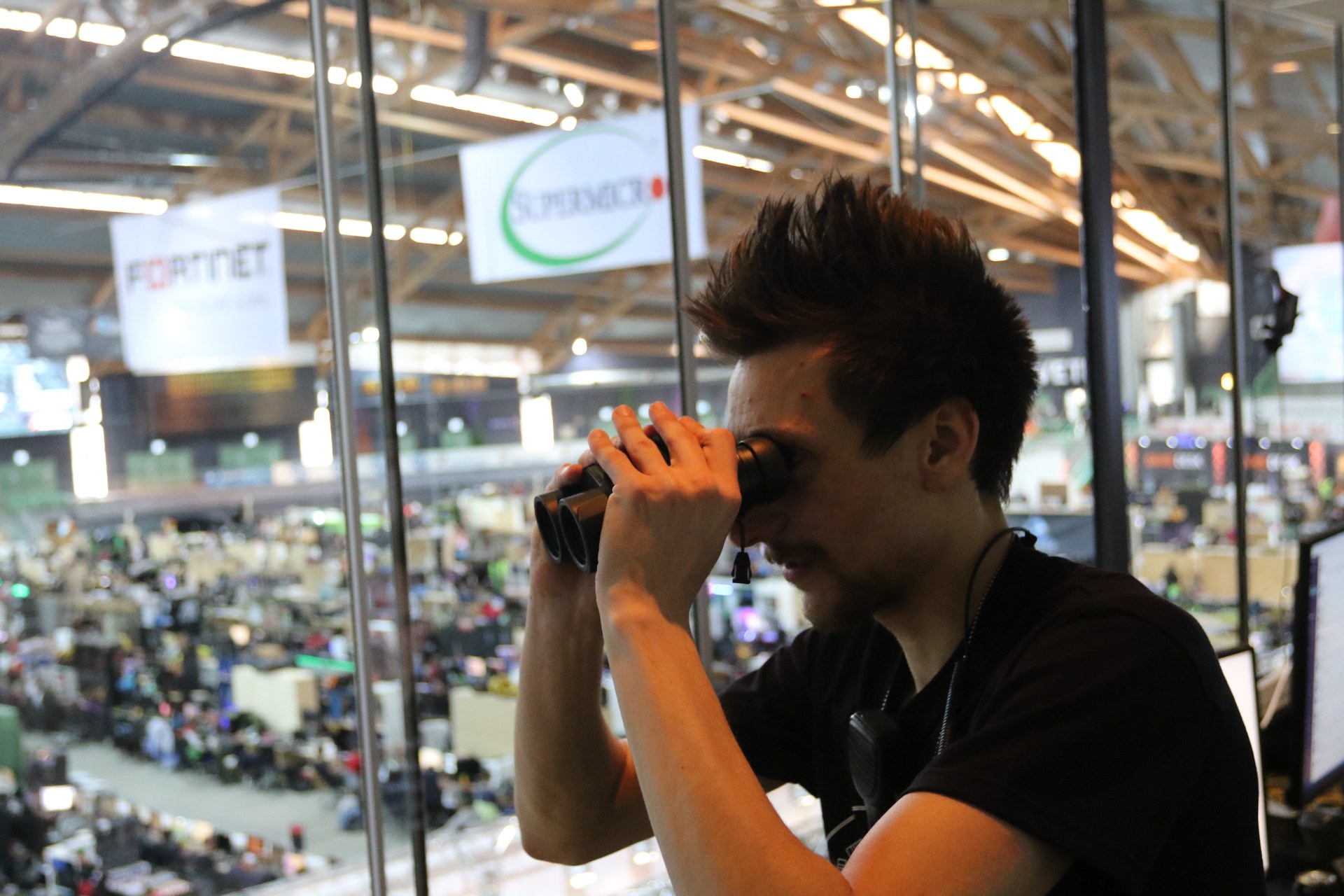
Our lights in front of the NOC has turned green!
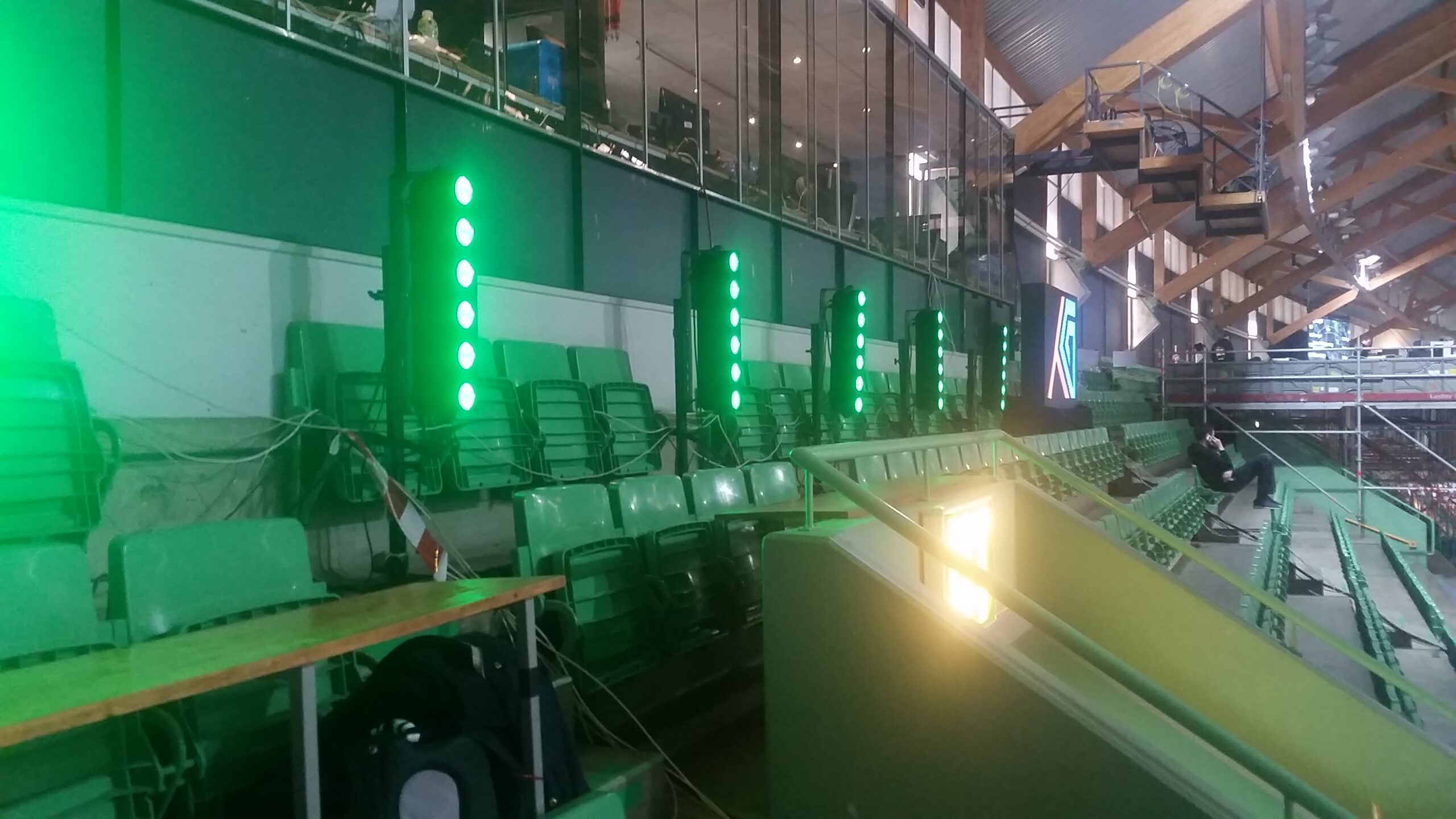
All edgeswitches are now up and running.
We will perform some tweaks and do a DHCP-run shortly.
See you soon!
Glenn is amazed by the servers. Or lights. Or both. To much coffee?

Thank you Nextron, for blazing fast servers!
Photo: Joachim Tingvold
It’s Saturday. On Wednesday 5000 people storm the fort. Or in our case, the Viking Ship.
And the good news is, I can now sit in the NOC and enjoy moving pictures of cute animals.
On a slightly more serious note:
We’ve got the internet uplink up (a week ago).
We’ve got net in the NOC.
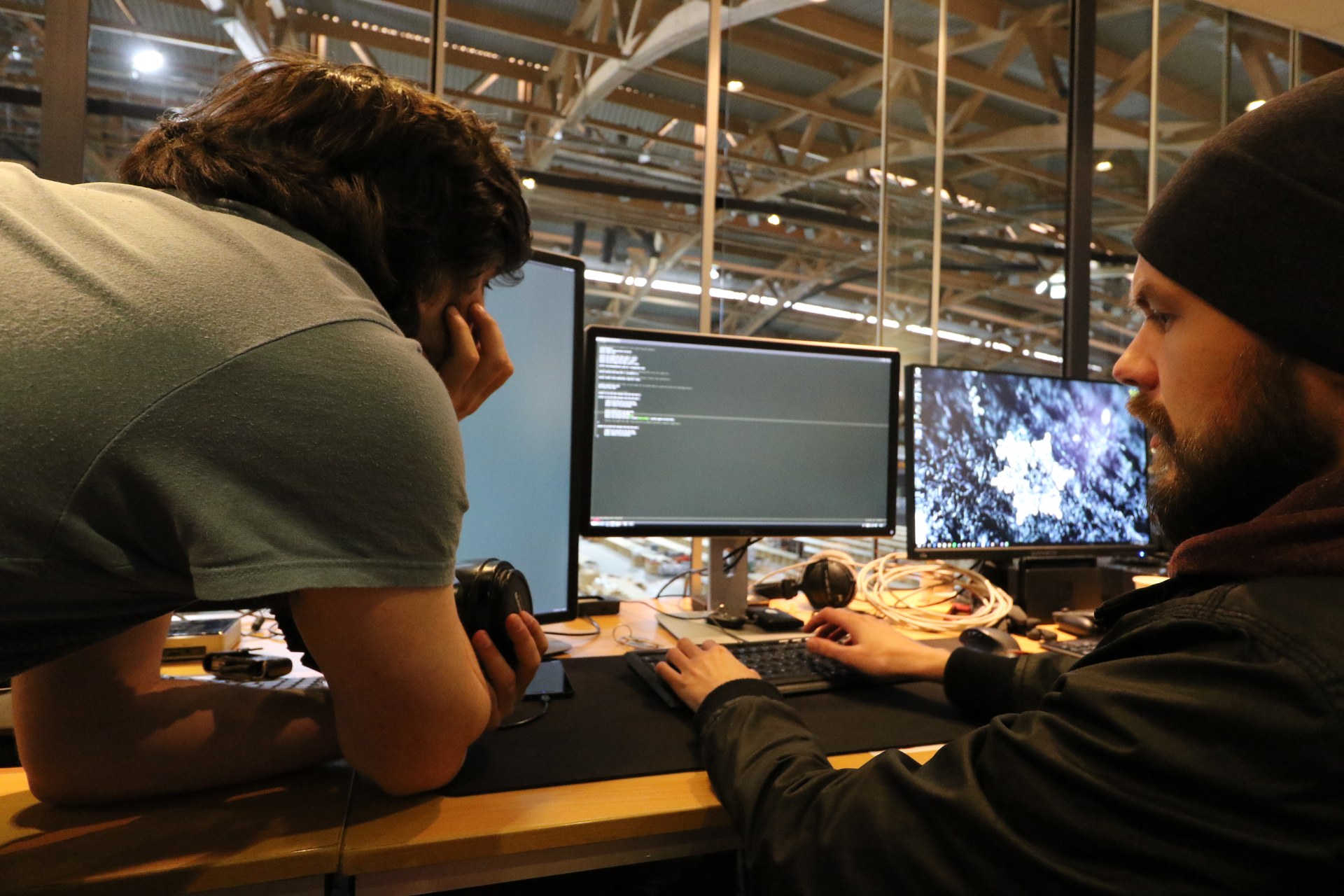
The ring is up.
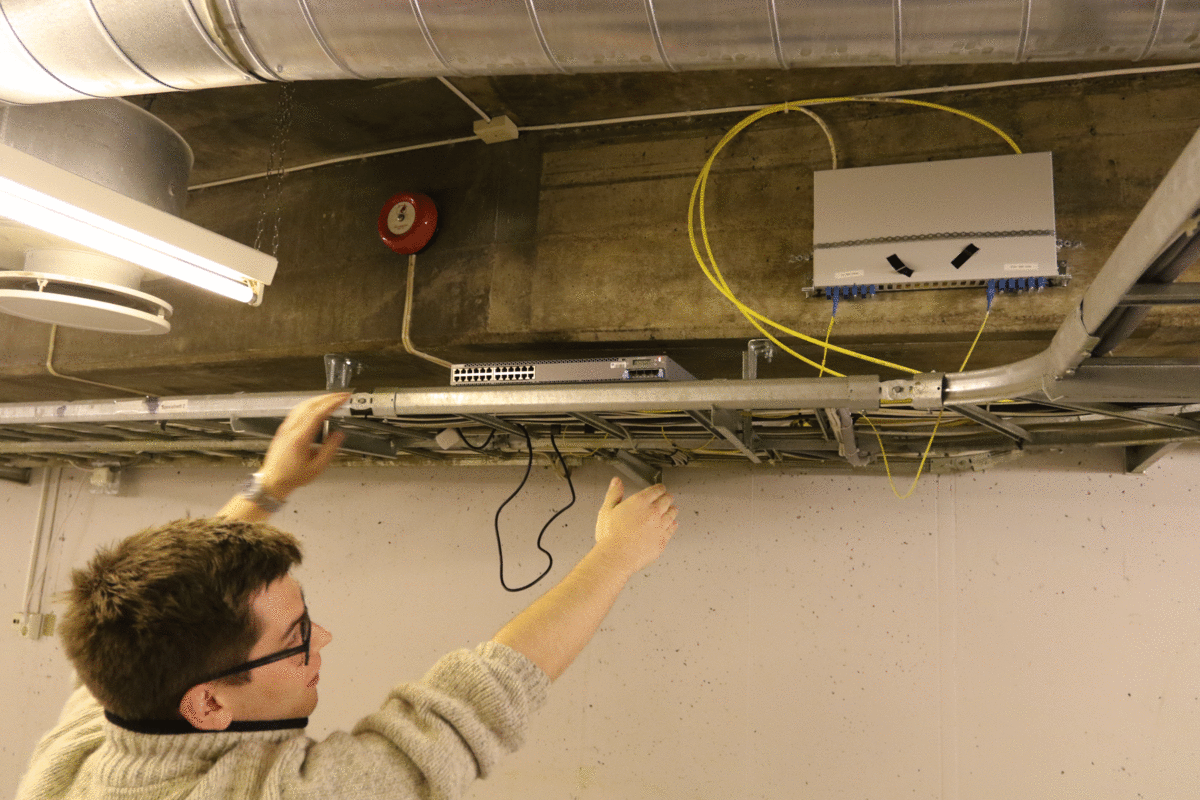
We’re setting up a distro-switch to test a potential issue we might have to work around.
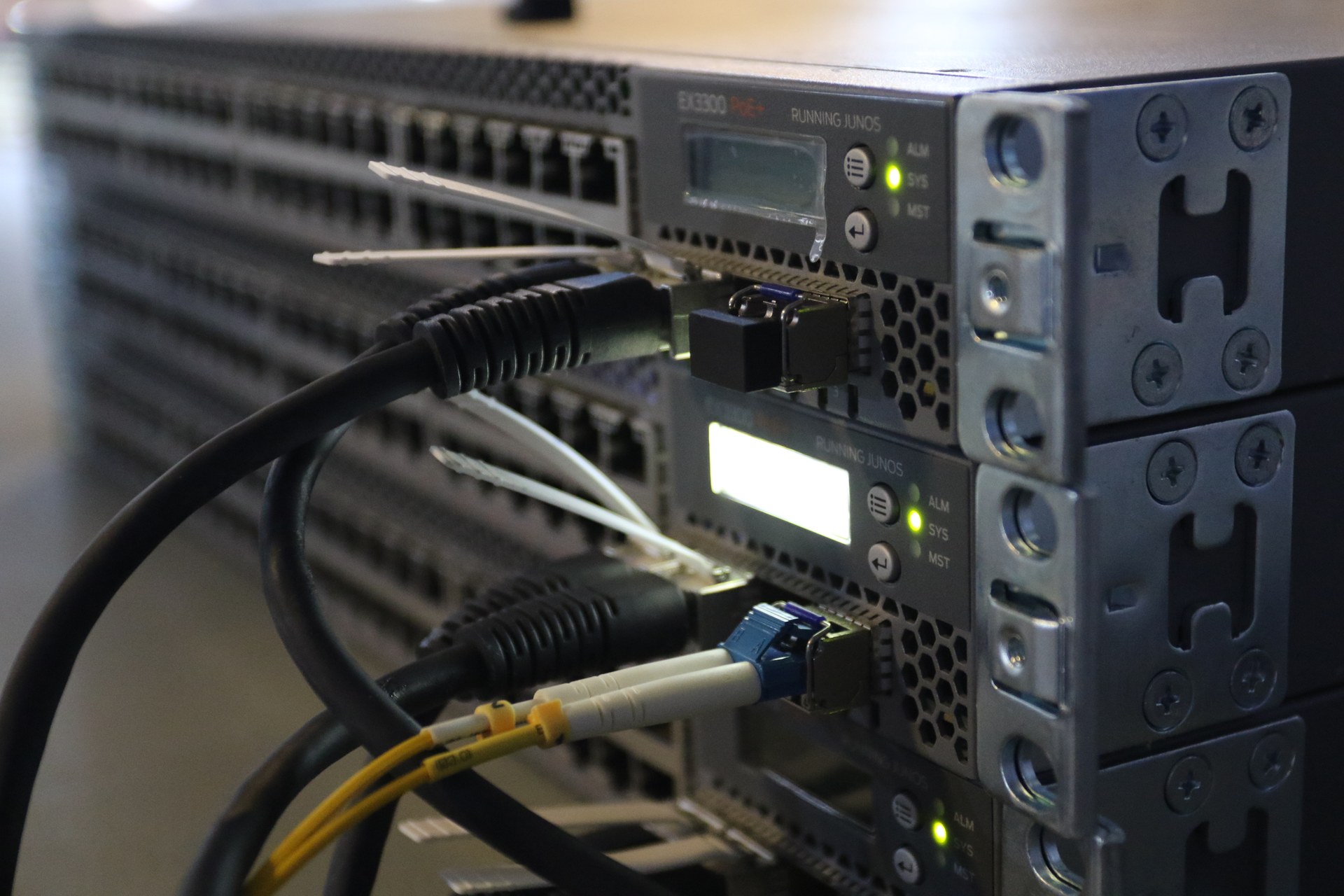
Our server rack is mostly up.
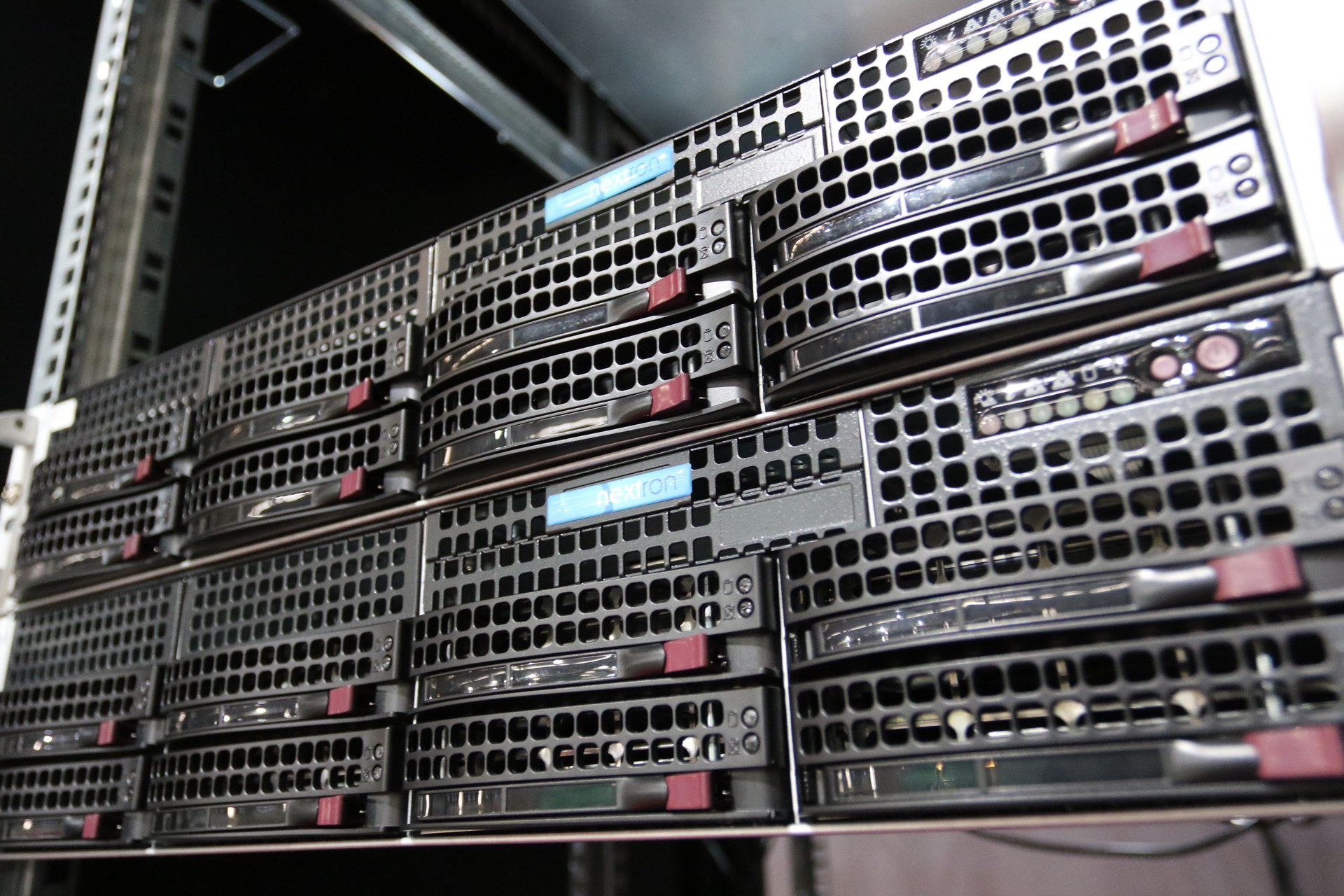
And we’ve delivered the first few access nets to the various crews that need it to get work done.
We still have quite a bit of stuff to do, but we’re (slightly) ahead of schedule. To get an idea of what’s left, here are some (!) of our access switches, still in their boxes.
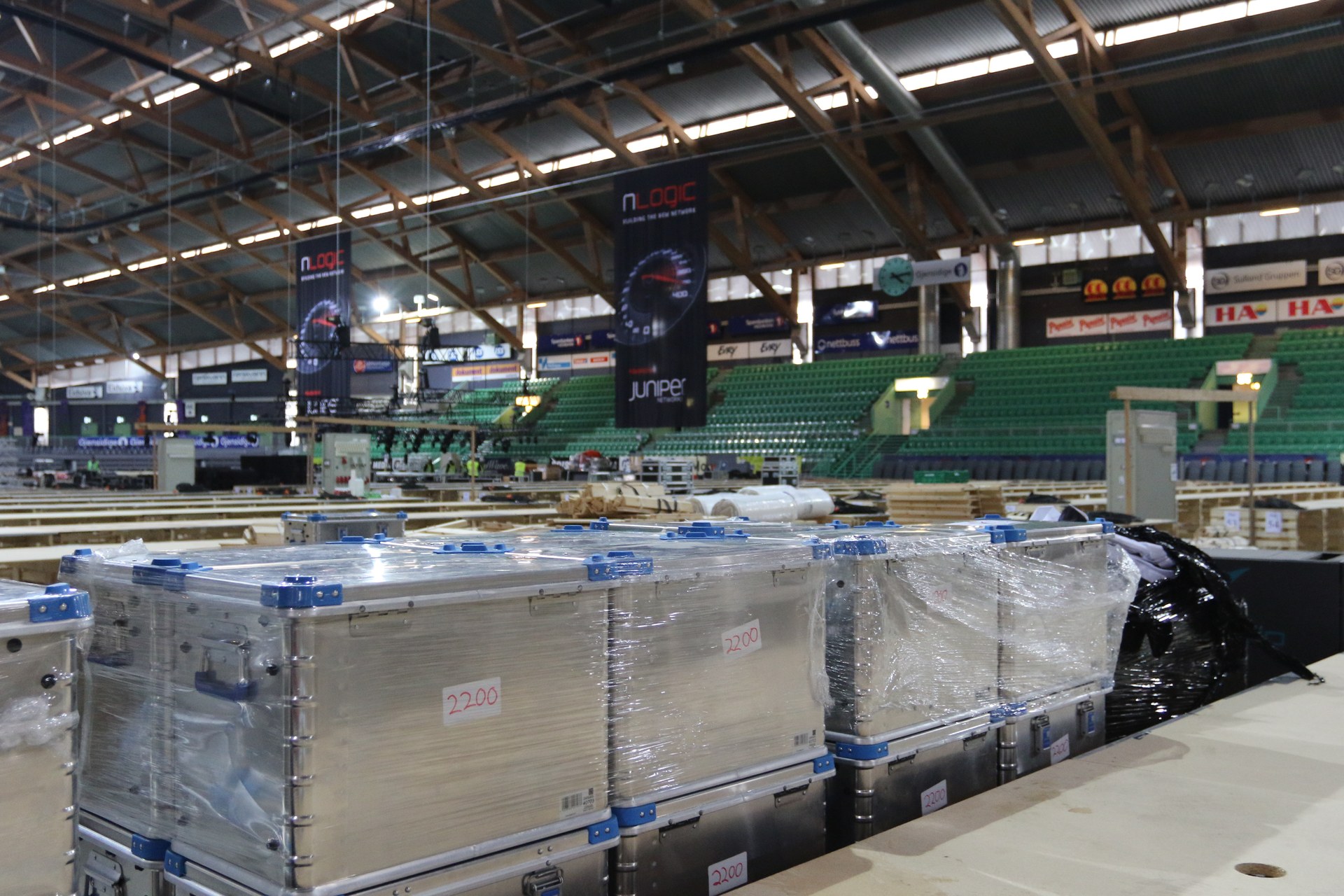
A few meters worth of fiber cable.
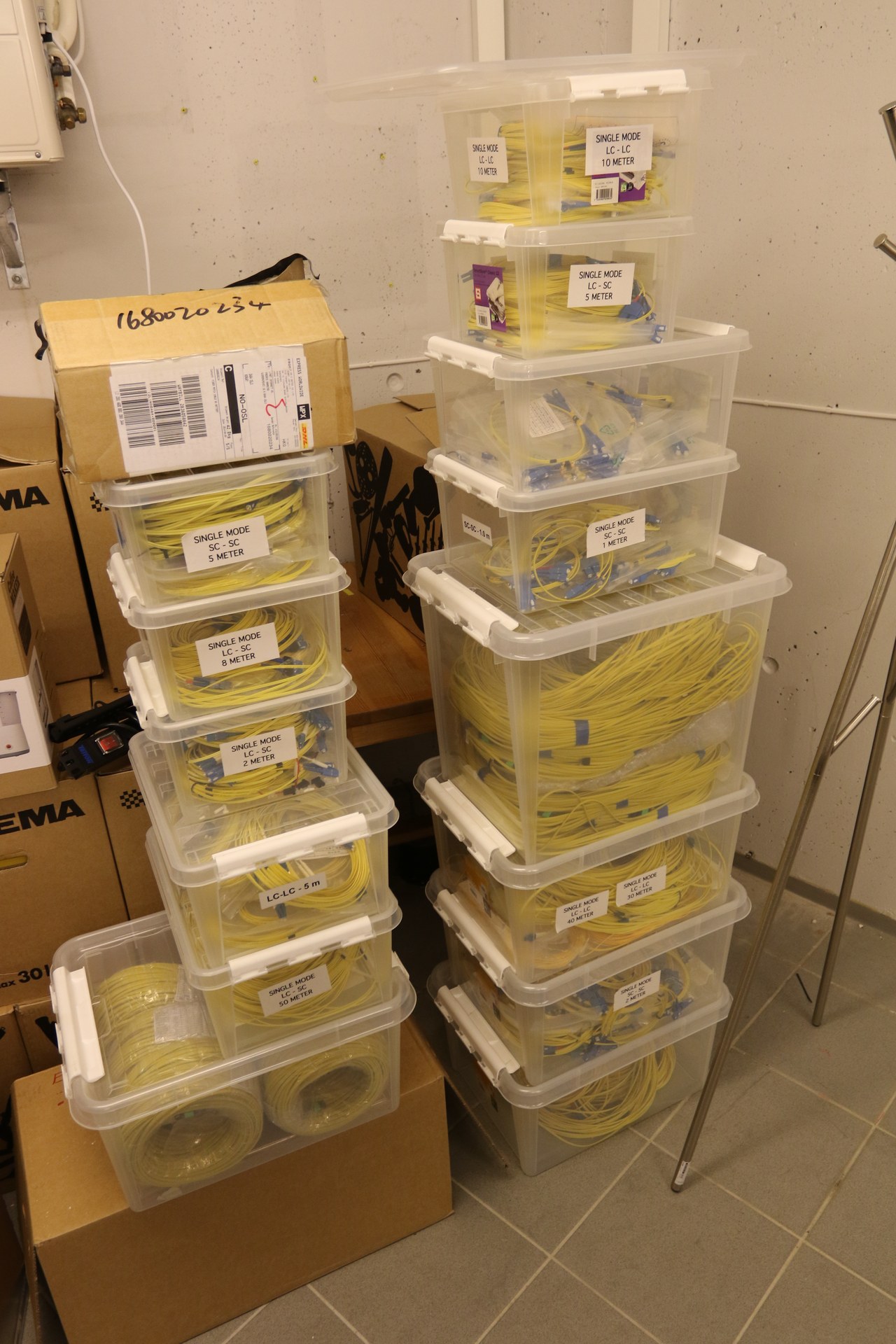
And with one last image, I’m signing off and going back to my cat picture. I mean back to work.
See you soon!
